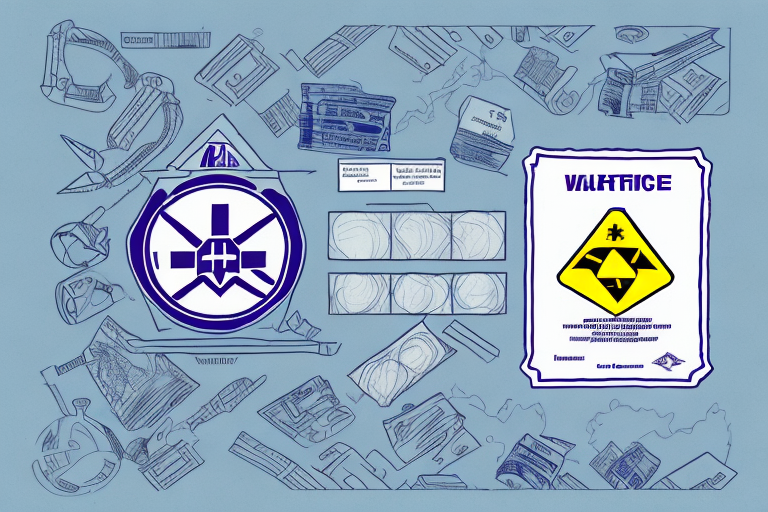What Are the New FedEx Hazardous Shipping Rates?
If you're involved in shipping hazardous materials, you've likely heard about the new FedEx hazardous shipping rates. These updates are designed to ensure the safety and proper handling of dangerous goods during transportation. In this article, we'll explore the significance of these rates, what FedEx's new rates entail, who will be impacted, and more.
Understanding the Importance of Hazardous Shipping Rates
Shipping hazardous materials requires stringent precautions to maintain safety for all parties involved. This includes proper documentation, suitable packaging, and adherence to government regulations. Hazardous shipping rates help cover the additional costs associated with transporting dangerous goods, such as specialized equipment, training, and insurance. Without these adequate rates, carriers might struggle to handle these materials safely, leading to potential safety hazards and liability issues.
Hazardous shipping rates can vary based on the type of material and the mode of transportation. For instance, air transportation of hazardous materials generally incurs higher rates due to stricter safety measures and regulations. Accurate classification of materials and selection of the appropriate carrier are crucial for compliance and safety.
According to the Federal Aviation Administration (FAA), improper handling of hazardous materials can lead to significant safety risks, emphasizing the need for careful rate structuring.
Overview of FedEx's New Hazardous Shipping Rates
In 2020, FedEx updated their hazardous shipping rates to better align with industry standards and comply with evolving government regulations. These new rates apply to both hazardous materials and dangerous goods shipments, varying based on the material type and associated risk level.
A notable change is the introduction of a new risk assessment tool. This tool enables shippers to accurately determine the risk level of their hazardous shipments, aiding FedEx in setting appropriate shipping rates. Factors such as material type, quantity, and transportation mode are considered. Utilizing this tool ensures that shippers are charged correctly while maintaining the safety of their products during transit.
For more details, refer to FedEx's official Hazardous Materials Shipping page.
Who Will Be Affected by the New Hazardous Shipping Rates?
Any business or individual shipping hazardous materials via FedEx will be subject to the new rates. This includes manufacturers, distributors, suppliers of hazardous goods, and those transporting these materials as part of their operations.
Recipients of hazardous shipments may also experience increased shipping costs, affecting their overall expenses. Additionally, the new rates could lead to longer delivery times as FedEx implements additional safety precautions to ensure secure transport.
What Are the Key Changes in the New Hazardous Shipping Rates?
Key changes in FedEx's new hazardous shipping rates include:
- Increased fees for certain high-risk materials
- New rates for previously unclassified materials
- Revised maximum weights and quantities for specific items
- Changes to rate calculation and assessment methodologies
Shippers are now required to provide more detailed information about the materials being shipped, including exact chemical compositions and potential hazards.
These new rates apply across all transportation modes—air, ground, and sea—necessitating careful consideration of the most cost-effective and efficient shipping methods for hazardous materials.
How Will the New FedEx Hazardous Shipping Rates Impact Your Business?
The impact of FedEx's new hazardous shipping rates on your business depends on factors such as the types of materials shipped, quantities, and shipping volume. Some businesses may face higher shipping costs, while others might benefit from revised pricing for certain materials. It's essential to assess current shipping practices to understand the financial implications and plan accordingly.
Moreover, the introduction of new regulations and safety measures could result in delayed processing and delivery of hazardous materials, potentially affecting business operations and customer satisfaction. Communicating any potential delays to customers and adjusting shipping timelines can help mitigate these impacts.
For a comprehensive understanding of potential impacts, consult the latest FedEx Hazardous Materials Shipping Guidelines.
Tips for Managing Costs Under the New FedEx Hazardous Shipping Rates
To manage costs associated with the new rates, consider the following strategies:
- Review shipping practices to identify cost-reduction opportunities
- Explore alternative carriers or shipping methods for specific materials
- Ensure proper documentation and labeling to avoid unnecessary fees or delays
- Utilize online tools and resources to streamline the shipping process and optimize costs
Staying informed about changes in hazardous shipping regulations can help avoid unexpected fees or penalties. Attending industry conferences or workshops can provide insights into best practices for managing hazardous shipping costs.
Comparing FedEx's Hazardous Shipping Rates to Other Carriers
If you're considering switching carriers due to the new FedEx rates, it's important to compare rates and services among multiple providers. Factors to consider include shipping volume, destination, and types of materials shipped to make an informed decision.
Be aware that different carriers may have varying regulations and restrictions for hazardous materials. Thoroughly research each carrier's policies to ensure compliance and safe handling of shipments. Consulting with other businesses in your industry can provide valuable recommendations based on their experiences.
For comparison, refer to the Carrier Comparison Guide on ShipScience.
How to Comply with Regulations When Shipping Hazardous Materials with FedEx
Compliance with government regulations is crucial when shipping hazardous materials to ensure safety and legality. This involves proper labeling, documentation, packaging, and understanding specific regulations for different material types and destinations.
Training employees who handle hazardous materials is essential. Providing them with the necessary knowledge and skills ensures safe handling and compliance with applicable regulations.
Stay updated with regulatory changes affecting your shipping practices, such as alterations in labeling or documentation requirements. Utilize resources like FedEx's Regulatory Compliance Guide to remain informed and compliant.
Examples of Common Hazardous Materials and Their Associated Shipping Costs with FedEx
Common hazardous materials include flammable liquids, corrosive substances, and radioactive materials. Shipping costs for these materials vary based on risk level, quantity, and other factors. Consult with a carrier or shipping expert to determine appropriate rates and methods for your specific materials.
Additionally, hazardous materials often require specialized packaging and labeling to ensure safe transportation. FedEx offers packaging options like UN-certified containers and temperature-controlled units, which can influence shipping costs. Incorporating these packaging requirements into your budget is essential for accurate cost estimation.
For more information on packaging solutions, visit FedEx's Hazardous Materials Packaging page.
How to Get a Quote for Your Next FedEx Hazardous Shipment
To obtain a quote for your next hazardous shipment with FedEx, visit their website or contact a customer service representative. Ensure you have all necessary information about the materials being shipped, including quantity and destination, to receive an accurate quote.
FedEx offers various hazardous materials shipping services, including ground, air, and international options. They provide guidance on packaging and labeling requirements to ensure compliance with regulations. Partnering with FedEx ensures your hazardous materials are shipped safely and efficiently.
Request a quote through the FedEx Hazardous Materials Shipping page.
Leveraging Technology to Optimize Your FedEx Hazardous Shipments and Costs
Utilizing technology can streamline the shipping process and optimize costs for hazardous materials shipments. Online platforms for booking and tracking shipments, along with real-time updates and alerts, enhance visibility and reduce the risk of delays or issues.
FedEx offers a Hazardous Materials Shipping Guide that provides detailed information on packaging, labeling, and documentation requirements. Additionally, FedEx's Hazardous Materials Shipping Hotline offers support for any questions or concerns regarding shipments.
Leveraging these technological resources ensures that your hazardous shipments are managed efficiently, safely, and cost-effectively.




















